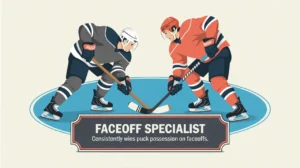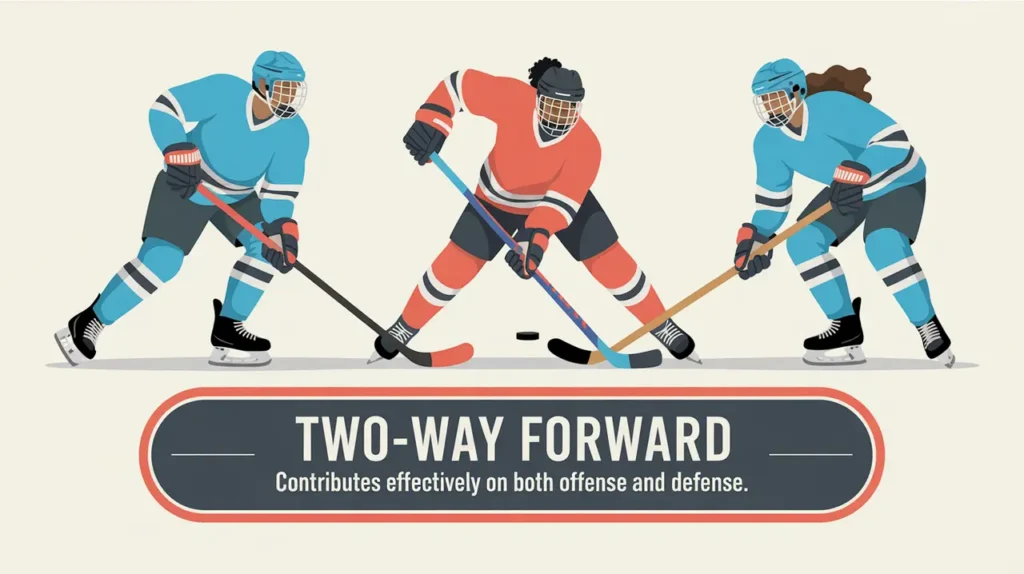Jim’s Intro to the Offensive Defenseman
Hi folks, Jim here, the only commentator who lost his role as an offensive defenseman because I kept on forgetting to get back into defense.
What is an offensive defenseman?
An offensive defenseman is a blueliner whose primary strength is generating and supporting offense without abandoning defensive responsibilities. These players excel at moving the puck, joining the rush, and creating scoring chances from the back end. They’re catalysts who stretch the ice, break defensive structures, and often serve as power play quarterbacks.
How does it work?
Offensive defensemen influence the game through puck movement, vision, and timing:
Puck-Carrying and Breakouts
- Confident skating and stickhandling let them skate the puck out of danger instead of relying solely on outlet passes.
- They transition from defense to offense smoothly, often initiating controlled zone entries.
Offensive Blue Line Play
- Keep pucks in at the line with quick reads and good stick work.
- Move laterally to open shooting and passing lanes.
- Take well-placed point shots designed to create rebounds or deflections.
Joining the Rush
- They read when to jump up as a fourth attacker, adding an extra layer that overwhelms defenders.
- Timing is everything. Go too early and they leave gaps; too late and the window closes.
Power Play Quarterback
- Run the power play from the point, directing puck movement, finding seams, and distributing to shooters.
- Their ability to walk the line and thread passes creates high-quality chances.
Defensive Balance
- Though offense is their calling card, good offensive defensemen recover quickly, use strong skating to get back, and rely on positioning to limit rushes against.
Common Situations Involving Offensive Defensemen
- Neutral Zone Transitions: Leading or supporting rushes with smart puck movement.
- Offensive Zone Pressure: Holding the line to sustain cycles and create shooting lanes.
- Power Plays: Running point, distributing passes, and shooting through traffic.
- Pinches: Stepping in along the boards to keep plays alive.
- Breakouts: Turning defensive retrievals into quick-strike opportunities.
How do you make good decisions with it?
Good offensive defenseman decisions rely on risk management and situational awareness.
- Pick Your Moments: Jump into the rush when support is behind you. Don’t chase offense at the expense of structure.
- Move Laterally, Not Just Forward: Create angles and open lanes without overcommitting.
- Shoot Smart: Focus on creating rebounds and deflections rather than blasting blindly.
- Communicate Constantly: Let forwards know when you’re joining or holding back.
- Know Your Partner: If you go, they stay. Balance is key.
How do you master it?
Mastering this role requires elite skating, vision, and hockey IQ. Top offensive defensemen know when to attack and when to stay anchored. They study rush patterns, refine their timing, and develop confidence handling the puck under pressure. Power play reps and game experience sharpen their ability to read defenses and exploit seams.
What does it look like when done right?
A skilled offensive defenseman looks like a conductor directing traffic. They retrieve the puck, skate it through the neutral zone, dish a perfect pass, and arrive at the blue line just in time to keep the cycle alive. On the power play, they glide laterally, freeze defenders with a fake, and fire a shot that creates a goal-mouth scramble. Defensively, they recover smoothly, snuffing out counters before they turn dangerous.
Commentator’s Corner
Jim’s Take
An offensive defenseman at their best is like adding a playmaker who happens to wear a different set of pads. When they read the game right, they change its entire rhythm.
Parent Tip
If your player plays this style, encourage them to build both skating agility and decision-making discipline. Offense from the blue line is earned through control, not chaos.
Player Tip
Don’t just think about scoring. Think about creating space. Open lanes, stretch defenses, and make the ice bigger for everyone.
A Final Thought
The offensive defenseman brings creativity to a traditionally conservative position. When they master timing and balance, they can defend and ignite the attack by making the game flow through them.









